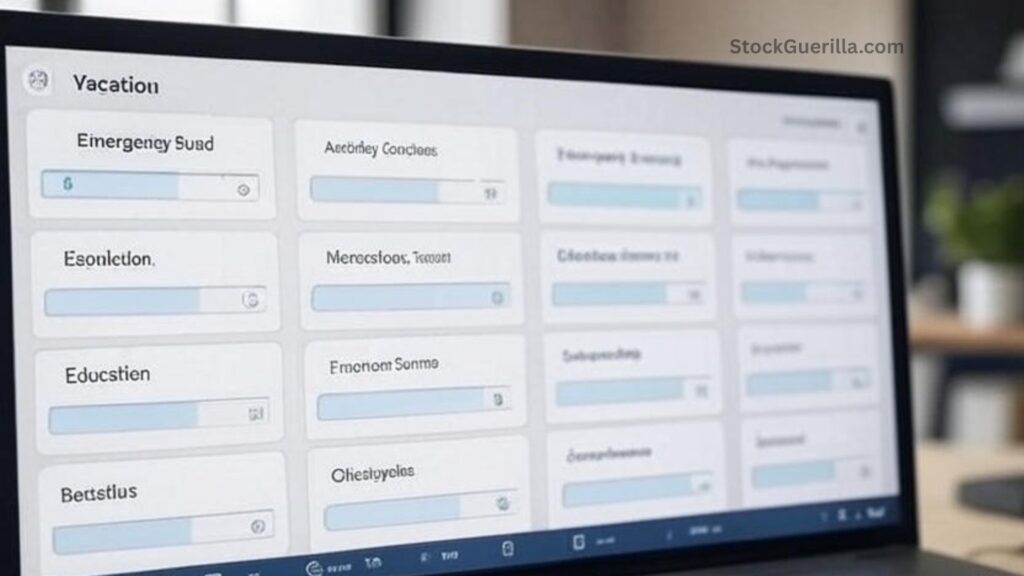What are the Benefits of Automating Your Savings?
Do you often find it hard to save money regularly? You’re not alone. Most people struggle with consistency when it comes to building a savings habit. Between daily expenses, unexpected bills, and lifestyle temptations, saving often gets pushed to the bottom of the list.
But what if there was a way to save without even thinking about it? That’s exactly what automating your savings does. And one of the smartest tools to make this happen is a Recurring Deposit (RD).
A Recurring Deposit is a type of fixed-term savings plan offered by banks where you deposit a fixed amount every month for a chosen period. In return, your money grows steadily with guaranteed interest. What makes RDs powerful is that you can automate them—your bank deducts the amount from your account automatically each month, helping you save consistently without effort.
In this guide, we’ll dive deep into the benefits of automating your savings with RDs, how they work, why they’re safer than many other investments, and practical tips to set one up for maximum benefit.
1. Builds a Saving Habit
One of the hardest parts of managing money is developing the habit of saving. Automating your savings makes it easier because the process is hands-off.

Here’s how it helps:
- The moment your salary or income hits your account, a portion is automatically transferred into your RD.
- You don’t have to manually move money, reducing the temptation to spend first and save later.
- Over time, saving becomes second nature—like paying a monthly subscription, except this “subscription” is for your future.
💡 Example: Imagine you set aside ₹2,000 every month in an RD for 5 years. At the end of the term, you not only get back your ₹1.2 lakh deposit but also the added interest—without ever feeling like you had to “force yourself” to save.

Also Read: What are the Best-Performing Stocks in the Transportation Industry?
2. Keeps You Consistent
Consistency is the secret to building wealth. Many people start with good intentions but forget to save some months. Automating eliminates this issue.
- The auto-debit feature ensures your savings happen on time, every month.
- No more reminders, alarms, or sticky notes.
- You’ll never skip a contribution unless your account lacks funds.
Think of it as a fitness plan: skipping one workout may not matter, but skipping several adds up. Automated savings keep your financial workout on track.
3. Flexible for All Goals
- RDs aren’t just for long-term savers—they work for short-, medium-, and long-term goals.
- Short-term RD (6–12 months): Perfect if you’re saving for a holiday, new phone, or festival expenses.
- Medium-term RD (1–5 years): Ideal for a child’s school fees, buying a bike, or planning a wedding.
- Long-term RD (5–10 years): Excellent for retirement, buying a house, or other big financial milestones.
- Most banks also offer online RD calculators where you can estimate your maturity value based on deposit amount, tenure, and interest rate.
4. Safe from Market Ups and Downs
One of the biggest advantages of RDs is safety.
Unlike stock markets, mutual funds, or crypto, RDs are not affected by market volatility. The interest rate is fixed when you open the account and remains unchanged throughout the tenure.
- Even if markets crash, your RD continues to grow.
- You get guaranteed returns—making it a stress-free savings option.
- Perfect for risk-averse savers who want stability.
👉 According to Investopedia, diversification between safe instruments like deposits and riskier assets is key to financial health. RDs can balance out risk in your portfolio.

5. Encourages Long-Term Wealth Creation
Small, consistent deposits can grow into significant wealth over time, thanks to compounding.
- Each month’s deposit earns interest.
- That interest is reinvested, generating even more returns.
- The longer you stay invested, the greater the compounding effect.
💡 Case Study:
Riya invests ₹3,000 per month in an RD for 10 years at 6.5% interest. At maturity, she receives around ₹4.9 lakh. That’s ₹1.3 lakh in pure interest—without taking any market risks.

Also Read: How to Invest in Dividend-Paying Stocks?
6. Reduces Financial Stress
- When savings are automated, you don’t constantly worry about whether you’re saving enough. The system takes care of it.
- Ability to focus on enjoying life today while securing tomorrow.
- No guilt of “I’ll save next month.”
- Peace of mind knowing your future goals are being funded automatically.

7. Suitable for All Types of Earners
RDs are accessible to almost everyone:
- Salaried professionals: Can automate deductions right after payday.
- Freelancers/self-employed: Flexible deposits allow you to save what you can consistently.
- Students & homemakers: Many banks let you start RDs with as little as ₹100 per month.
This makes RDs a universal savings tool—perfect whether you’re just starting your career or already financially established.
8. How to Set Up an Automated RD
Setting up an RD is simpler than most people think.
Step-by-step guide:
- Choose a Bank – Compare interest rates, customer service, and flexibility.
- Open an RD Account – You can do this online or at a branch.
- Log in to Net Banking/Mobile App – Navigate to the deposits section.
- Select Recurring Deposit – Enter the deposit amount and tenure.
- Enable Auto-Debit – Link your savings account for automatic monthly transfers.
- Review & Confirm – Double-check details including nominee information.
- First Payment – Usually deducted instantly; future payments will follow monthly.
💡 Pro Tip: If you already have a savings account with Ujjivan Small Finance Bank, you can start an RD with just ₹100!

Also Read: How is the Tech Sector Performing Amid Regulatory Changes?
9. Final Thoughts
Automating your savings through a Recurring Deposit is one of the smartest financial habits you can build.
- It ensures consistency.
- It builds discipline.
- It keeps your money safe from market volatility.
- It helps you achieve both short- and long-term financial goals.
Whether you’re saving for a small dream like a holiday or a big milestone like buying a house, RDs give you the structure and peace of mind you need.
🚀 Start small, but start today. Even ₹500 per month can grow into something meaningful over time. The earlier you begin, the stronger your financial foundation will be.
Frequently Asked Questions (FAQs)
Q1: How much money do I need to start an RD?
Most banks let you start with as little as ₹100 to ₹500 per month.
Q2: Can I change the deposit amount later?
In most cases, the deposit amount is fixed once you set up the RD. If you want to change, you may need to open a new RD.
Q3: Are RD returns taxable?
Yes, the interest earned is taxable under your income tax slab. However, banks deduct TDS only if the total interest exceeds ₹40,000 in a year.
Q4: What happens if I miss a payment?
Banks may allow a grace period, but repeated missed payments can lead to penalties or account closure. That’s why auto-debit is recommended.
Q5: Which is better: RD or FD?
RDs are better for building a savings habit with small monthly deposits.
FDs are better if you already have a lump sum to invest.
Both offer guaranteed returns, and you can use them together for a balanced approach.




Post Comment